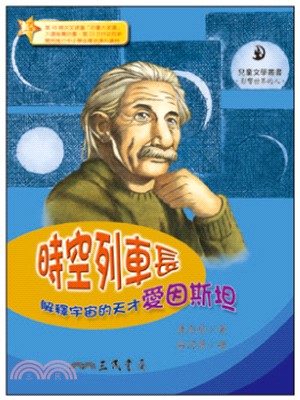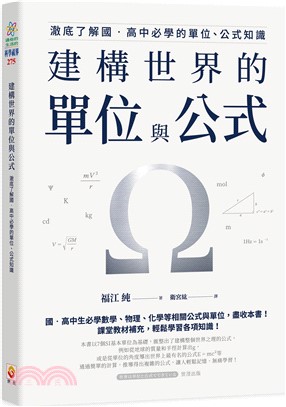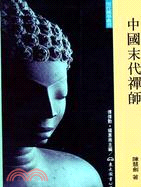College Physics 11/e, Global Edition
相關商品
商品簡介
商品簡介
●GUIDED PROBLEMS: Guided Problems help train students to break down complex problems into a series of simpler problems, an essential problem-solving skill. A physics problem typically asks for one physical quantity in a given context. Often, however, several concepts must be used and a number of calculations are required to get that final answer, and many students are not accustomed to this level of complexity. Guided Problems break a problem into smaller steps, enabling students to grasp all the concepts and strategies required to arrive at a correct solution.
●BIOMEDICAL APPLICATIONS & PROBLEMS AND MCAT TEST PREPARATION GUIDE: Indicated in the margin and in the problems set by an icon, biomedical applications and problems deal with practical and interesting applications of physical principles to biology and medicine. The MCAT Test Preparation Guide, located at the front of the book, outlines the six content categories related to physics on the exam and aligns these categories with content from the text. Students can use the guide to prepare for the MCAT exam, class tests, or homework assignments.
●QUICK QUIZZES: Quick Quizzes, cast in an objective format (including multiple-choice, true/false, matching, and ranking questions), provide students with opportunities to test their understanding of the physical concepts presented. The questions require students to make decisions on the basis of sound reasoning, and some have been written to help students overcome common misconceptions. Many instructors choose to use Quick Quiz questions in a "peer instruction" teaching style.
●APPLICATIONS: Although physics is relevant to so much in our modern lives, it may not be obvious to students in an introductory course. Application margin notes make the relevance of physics to everyday life more obvious by pointing out specific applications in the text.
●APPLYING PHYSICS: The Applying Physics features provide students with an additional means of reviewing concepts presented in that section. Some Applying Physics examples demonstrate the connection between the concepts presented in that chapter and other scientific disciplines. These examples also serve as models for students when assigned the task of responding to the Conceptual Questions at the end of each topic.
●TIPS: Placed in the margins of the text, Tips address common student misconceptions and situations in which students often follow unproductive paths. More than 95 Tips are provided to help students avoid common mistakes and misunderstandings.
●WORKED EXAMPLES: A hallmark strength of the text, each worked example is a complete learning experience. The GOAL describes the concepts being explored. The PROBLEM presents the question. The STRATEGY helps students create a framework for working out the solution. The SOLUTION uses a two-column format that provides explanations on the left and mathematical steps on the right; these serve as a training tool. REMARKS highlight underlying concepts follow the solution. The QUESTION requires a conceptual response to test students' understanding, and the EXERCISE reinforces this understanding.
●PROBLEM-SOLVING STRATEGIES: A general problem-solving strategy to be followed by the student is outlined at the end of Topic 1. This strategy provides students with a structured process for solving problems. In most topics, more specific strategies and suggestions are included for solving the types of problems featured in both the worked examples and the end-of-topic problems. This feature helps students identify the essential steps in solving problems and increases their skills as problem solvers.
●CONCEPTUAL QUESTIONS: At the end of each topic are approximately 15 conceptual questions. The Applying Physics examples serve as models for students when conceptual questions are assigned and show how the concepts can be applied to understanding the physical world. Conceptual questions provide students with a means of self-testing the concepts presented in the topic; some are also appropriate for initiating classroom discussions.
●SYMBOLIC PROBLEMS: Symbolic Problems require the student to obtain an answer in terms of symbols. The goal is to train students to deal with mathematics at a level appropriate to the course. Symbolic equations are the most efficient vehicle for presenting relationships between physics concepts. Once students understand the physical concepts, their ability to solve problems is greatly enhanced. Symbolic problems train the student to postpone substitution of values, facilitating their ability to think conceptually using the equations.
●QUANTITATIVE/CONCEPTUAL PROBLEMS: Quantitative/Conceptual Problems encourage students to think conceptually about physics problems rather than rely solely on computational skills. Physics education research suggests that standard physics problems requiring calculations may not be entirely adequate in training students to think conceptually; students substitute numbers for symbols in equations without fully understanding what they are doing. Quantitative/Conceptual Problems combat this tendency by asking for answers requiring something other than a number or a calculation.
●BIOMEDICAL APPLICATIONS & PROBLEMS AND MCAT TEST PREPARATION GUIDE: Indicated in the margin and in the problems set by an icon, biomedical applications and problems deal with practical and interesting applications of physical principles to biology and medicine. The MCAT Test Preparation Guide, located at the front of the book, outlines the six content categories related to physics on the exam and aligns these categories with content from the text. Students can use the guide to prepare for the MCAT exam, class tests, or homework assignments.
●QUICK QUIZZES: Quick Quizzes, cast in an objective format (including multiple-choice, true/false, matching, and ranking questions), provide students with opportunities to test their understanding of the physical concepts presented. The questions require students to make decisions on the basis of sound reasoning, and some have been written to help students overcome common misconceptions. Many instructors choose to use Quick Quiz questions in a "peer instruction" teaching style.
●APPLICATIONS: Although physics is relevant to so much in our modern lives, it may not be obvious to students in an introductory course. Application margin notes make the relevance of physics to everyday life more obvious by pointing out specific applications in the text.
●APPLYING PHYSICS: The Applying Physics features provide students with an additional means of reviewing concepts presented in that section. Some Applying Physics examples demonstrate the connection between the concepts presented in that chapter and other scientific disciplines. These examples also serve as models for students when assigned the task of responding to the Conceptual Questions at the end of each topic.
●TIPS: Placed in the margins of the text, Tips address common student misconceptions and situations in which students often follow unproductive paths. More than 95 Tips are provided to help students avoid common mistakes and misunderstandings.
●WORKED EXAMPLES: A hallmark strength of the text, each worked example is a complete learning experience. The GOAL describes the concepts being explored. The PROBLEM presents the question. The STRATEGY helps students create a framework for working out the solution. The SOLUTION uses a two-column format that provides explanations on the left and mathematical steps on the right; these serve as a training tool. REMARKS highlight underlying concepts follow the solution. The QUESTION requires a conceptual response to test students' understanding, and the EXERCISE reinforces this understanding.
●PROBLEM-SOLVING STRATEGIES: A general problem-solving strategy to be followed by the student is outlined at the end of Topic 1. This strategy provides students with a structured process for solving problems. In most topics, more specific strategies and suggestions are included for solving the types of problems featured in both the worked examples and the end-of-topic problems. This feature helps students identify the essential steps in solving problems and increases their skills as problem solvers.
●CONCEPTUAL QUESTIONS: At the end of each topic are approximately 15 conceptual questions. The Applying Physics examples serve as models for students when conceptual questions are assigned and show how the concepts can be applied to understanding the physical world. Conceptual questions provide students with a means of self-testing the concepts presented in the topic; some are also appropriate for initiating classroom discussions.
●SYMBOLIC PROBLEMS: Symbolic Problems require the student to obtain an answer in terms of symbols. The goal is to train students to deal with mathematics at a level appropriate to the course. Symbolic equations are the most efficient vehicle for presenting relationships between physics concepts. Once students understand the physical concepts, their ability to solve problems is greatly enhanced. Symbolic problems train the student to postpone substitution of values, facilitating their ability to think conceptually using the equations.
●QUANTITATIVE/CONCEPTUAL PROBLEMS: Quantitative/Conceptual Problems encourage students to think conceptually about physics problems rather than rely solely on computational skills. Physics education research suggests that standard physics problems requiring calculations may not be entirely adequate in training students to think conceptually; students substitute numbers for symbols in equations without fully understanding what they are doing. Quantitative/Conceptual Problems combat this tendency by asking for answers requiring something other than a number or a calculation.
主題書展
更多主題書展
更多書展本週66折
您曾經瀏覽過的商品
購物須知
為了保護您的權益,「三民網路書店」提供會員七日商品鑑賞期(收到商品為起始日)。
若要辦理退貨,請在商品鑑賞期內寄回,且商品必須是全新狀態與完整包裝(商品、附件、發票、隨貨贈品等)否則恕不接受退貨。

























